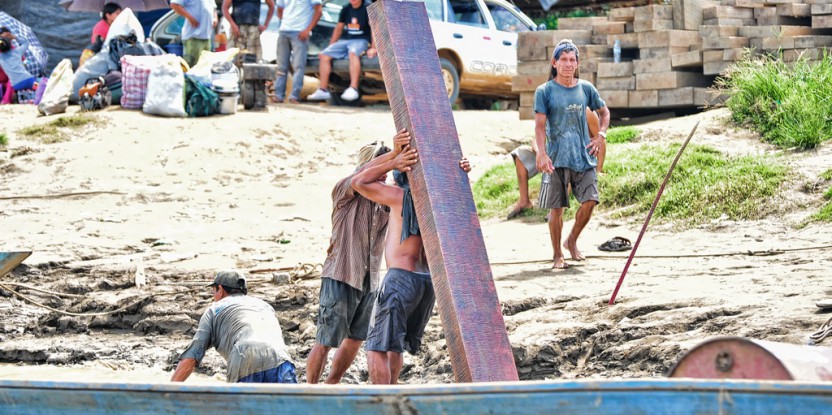LIMA, Peru (24 May, 2012)_ In the Peruvian Amazon, uncontrolled timber extraction from concession forests destined primarily for the harvesting of Brazil nuts could overtake the amount extracted from logging concession areas, warns a new CIFOR study. Existing regulations in Brazil nut forests must place tighter controls on timber extraction without compromising the needs of local people who access the forest for nut harvesting activities.
“Timber is a very important resource in the region as is the Brazil nut. However, since 2004, a reform in the law which allows timber extraction within Brazil nut concessions has prompted overharvesting due to weak legal enforcement and a set of much lighter requirements than those applied to extract timber from timber concessions,” said Manuel Guariguata, co-author of “El aprovechamiento de madera en las concesiones castañeras (Bertholletia excelsa) en Madre de Dios, Perú” and scientist at the Center for International Forestry Research.
“Without an integrated forest management system that includes a minimum set of legal standards and good practices that are flexible to the needs of local people, then the loopholes in the law could lead to timber over-exploitation in Brazil nut concessions,” he added.
Straddling the borders of Brazil and Bolivia, Madre de Dios is a region rich in biodiversity, including Brazil nut trees and wood resources. Approximately 65% of the local population depend on logging activities while 25% obtain up to half of their annual income from the harvesting and selling of Brazil nuts.
Since 2000, several forestry and wildlife laws were introduced to promote the sustainable use of forest resources in order to improve the economic and social benefits for communities working in forest- related activities.
In 2002, in response to social and economic problems in the Tambopata region, where people were unable to obtain the rights to extract timber on their land, a decree enabled the extraction of timber in forests originally allocated for the exclusive harvesting of Brazil nuts. Two years later, the government specified a maximum-harvest limit of 5m3/ha.
It was envisaged that the new decree would give Brazil nut harvesters the opportunity to complement their income by allowing them to extract wood from their concessions.
However, low taxation rates and weak legal requirements imposed by the government –much tighter in logging concession areas– led to tenfold increase in logging in Brazil nut forests between 2004 and 2006. Overall, from 2004 until 2009, wood extraction in Brazil nut forests was comparable and sometimes even greater than extraction activities in logging concession areas.
The findings highlight the need for further research into the impact on Brazil nut resources for local livelihoods.
“We need to have more information to see if this is having an impact on the Brazil nut trees, however there is not much research available yet. CIFOR is currently in the process of working with the Nut Harvesters Association to get a better understanding of the situation,” said Mary Menton, CIFOR scientist and co-author.
Despite revoking the decree in 2007 due to concerns from environmentalists, NGOs and nut harvesters about the viability of extracting wood in Brazil nut areas, it seems that the change in the law has come too late.
Logging permits continue to be issued and little progress has been made to close the loop holes which have allowed logging limits to be exceeded, and in some cases, resulted in illegal logging from outsiders.
The paper suggests that improvements in the legal and technical requirements for extraction and an integrated management approach to ‘harmonise’ wood and Brazil nut extraction, instead of a ‘complementary’ one, is needed to ensure that the overall rates of extraction do not increase.
“To achieve it, there should be a transparent dialogue among the regional actors involved in the extraction activities, with some kind of local ownership, without the interference of short term plans or other vested interests,” Guariguata concluded.
We want you to share Forests News content, which is licensed under Creative Commons Attribution-NonCommercial-ShareAlike 4.0 International (CC BY-NC-SA 4.0). This means you are free to redistribute our material for non-commercial purposes. All we ask is that you give Forests News appropriate credit and link to the original Forests News content, indicate if changes were made, and distribute your contributions under the same Creative Commons license. You must notify Forests News if you repost, reprint or reuse our materials by contacting forestsnews@cifor-icraf.org.
